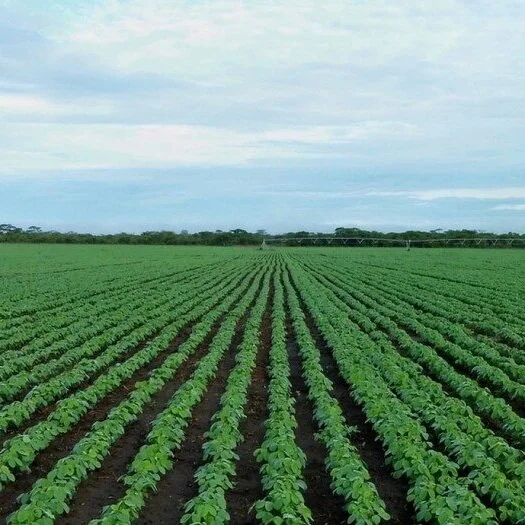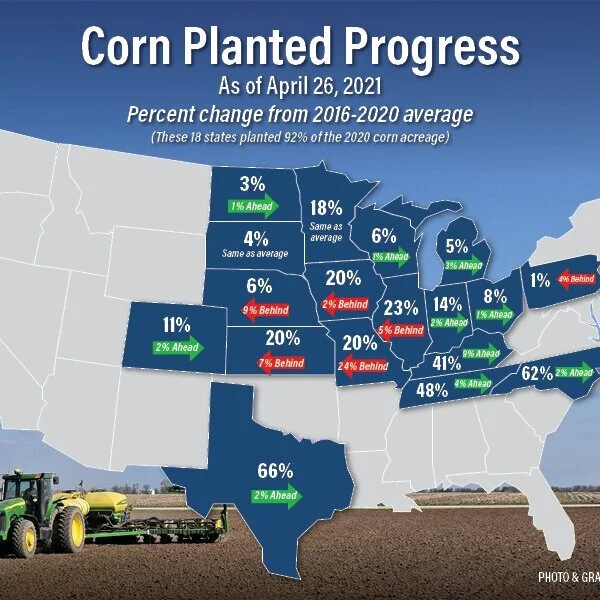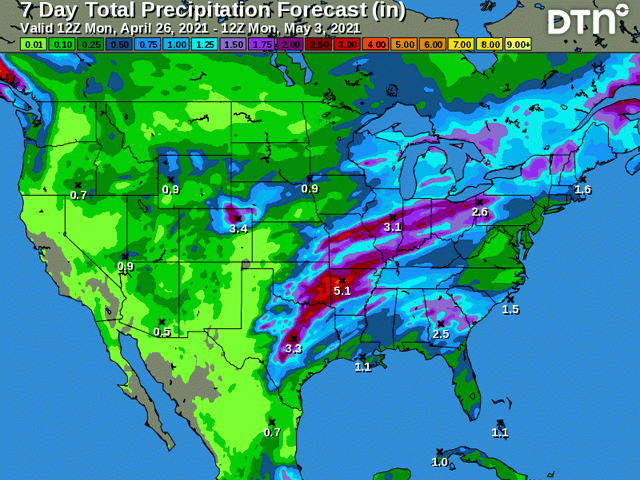Pay Attention To Late Planted Corn To Protect Yield
With high commodity prices, this is not the year to take the season off from scouting. Even if your corn was planted late, agronomists say you should continue scouting throughout the entire season.
“There may still be some things you can do this season to protect yield potential,” says Dave Nanda, director of genetics for Seed Genetics Direct. “If insects come in during silking in big numbers, or if diseases come in late, you must be ready.”
Read More
Grain Elevator Acquisition Advances
The U.S. Justice Department intervened in a large sale of grain elevators from one company to another, citing concerns about the impact on cash grain market competition.
Zen-Noh Grain Corp, a subsidiary of the National Federation of Agricultural Cooperative Associations of Japan, reached a $300 million deal to buy 35 operating and 13 idled grain elevators from Bunge North America last April.
Read More
Big Guys Load Up On Corn
Big speculators weren’t the only force driving corn futures a dollar or more off their highs in May. But these so-called hedge funds certainly helped accelerate the downturn over the last two weeks, trimming bullish bets by more than 95,000 contracts worth some 475 million bushels.
Still, these professional gamblers may not be the real force behind corn’s ups and downs in 2021. Their net long positions actually peaked way back in January, just after nearby futures topped $5 for the first time since 2014.
Read More
Earn More Dollars From Fungicide Applications
You know fungicides return more dollars per acre on your investment if there is significant disease pressure, especially with susceptible hybrids. Jason Gahimer, manager of Beck’s Practical Farm Research, says there are other ways to increase the likelihood of a higher yield response and better return on investment when applying fungicides.
His team examined these practices in PFR studies. They include selection of the right fungicide, proper timing of application vs. growth stage of corn, obtaining adequate coverage and applying at the best time of day.
Read More
China's Buying Spree Signals Tight Corn Supplies Could Carry Into 2022
China was back buying U.S. ag goods to start off the week, sending some mixed messages as the buys also came with cancelations.
USDA confirmed on Monday China purchased just over 1 million metric tons of new crop corn, but USDA also announced the country was canceling a buy of 280,000 metric tons of old crop corn.The major buy came on the heels of Beijing buying up 1.36 million metric tons of new crop corn last week.
Trade sources are also reporting China was buying corn from Ukraine and Canada for new-crop delivery last Friday.
Read More
First Look at 2021/22 Marketing Year Following Sky-Rocketing 2020/21 Export Demand
The May World Agricultural Supply and Demand Estimates gives the first look at the newest marketing year demand expectations since the USDA Agricultural Outlook Forum in February. This is the highlight of spring USDA reports as it incorporates farmer planting decisions from the March Prospective Planting report and adapts supply estimates to reflect weekly planting progress reports. The big story leading up to this report is rising prices due to the increased global demand for U.S. commodities. This Market Intel dives into the May WASDE for updated estimates of the current 2020/21 marketing year crop and assesses what could be in store for the newest 2021/22 marketing year, which starts in September.
Read More
Planting Season Hampered by Rain
Planting season for area crops has been “hit and miss” due to uncooperative weather, said Carol Pinnell-Alison, LSU County Extension agent.
With corn planting season complete, farmers are busy fertilizing and performing weed control between rain showers on the crop.
Area farmers planted some 98,000 acres of corn last season, up from the previous year’s total of 72,000, according to Farm Service Agency (FSA) certified acreage numbers.
Read More
Grain Market Rally: Is It History In The Making?
With recent rallies in May 2021 futures, the price for a nearby corn contract soared to the highest level since June 2013. A combination of fundamental factors has fueled the recent surge including strong ethanol margins, record U.S. corn exports and ongoing dry weather in key corn growing areas of Brazil.
Read More
3 Reasons Corn Prices Shot Past $7
Up. Up. Up. May 2021 corn futures topped $7 per bushel on April 27. A look at the corn price chart shows a dramatic and consistent climb higher. You can find multi-year highs in many ag commodities.
“These are one of those times that come along generally once every 30 years or so when the markets just really take off,” says Arlan Suderman, StoneX chief commodities economist. “And we just went through this about 12 years ago or so.”
Read More
Rice Market: Corn, Soy Strength Provide Spillover Support
September rice futures continued higher this week along with the rest of the CBOT grains. The graphs below illustrate the price trends for the major grains since March 30, 2021. New crop corn, wheat, and soybeans have all added over $1/bu following the NASS Prospective Plantings report released on March 31.
Recall the findings from the survey resulted in limit moves higher in corn and soybeans. Corn futures have caught fire this month as estimates of Brazil’s production continue to fall. From a relative price standpoint, soybeans are losing the acreage battle to corn.
Read More
Wet Week Ahead
A review and forecast of the U.S. crop weather scene begins with the impact of the cold snap during the April 21-27 week. That cold event certainly left its mark. Winter wheat in either good or excellent condition declined by four percentage points overall from the previous week to 49% rated good to excellent compared with 53% the previous week. Oklahoma and Texas showed declines in the good-to-excellent totals of 9 percentage points in Oklahoma (70% to 61%) and 10 points in Texas (28% to 18%). In addition, corn planting was slowed by the cold outbreak. Planting did advance 9 percentage points to 17% complete, but fell behind the average pace of 20%.
Read More
Planting Progress: Soybeans Ahead of Five-Year Average While Corn Lags Behind
While corn and soybean prices continue to march higher, farmers are making progress getting the 2021 crop in the ground. The latest estimates from USDA show soybean planting progress jumped from 3% to 8% in the past week, which is trending 3% ahead of the five-year average. Around 3% of the soybean crop has emerged, which is 1% ahead of last week. Louisiana trails in planting progress, but the other key soybean production states are tracking with the five-year average or even a bit ahead.
Read More
Corn, Soybean Prices Climb, Record Chinese Corn Imports Expected
Bloomberg writers Kim Chipman and Michael Hirtzer reported on Wednesday that, “Corn prices climbed above $6 a bushel to the loftiest level in almost eight years after the U.S. said it expects China to buy an all-time high amount of the grain off global markets.
Read More
Burndown Options For Corn
Weed management is a year-round job, but producers take special care to make sound management decisions prior to planting—including cover crop burndown.
David Russell, an Alabama Extension weed scientist, offers suggestions for planting into a weed-free field and maintaining a clean corn crop throughout the growing season. Russell’s areas of specialization include corn, soybeans, small grains, forages and non-crops.
Read More
The Mississippi River is Running Lower in Baton Rouge Than Past Years, But Will it Last?
A drier-than-usual year up north has Baton Rouge-area farmers and communities along the Mississippi River breathing a sigh of relief as the threat of flooding due to high water levels may not be a significant headache this year.
The river in Baton Rouge appears to have crested last week at about 38 feet, just over what’s considered a moderate flood stage. The National Weather Service projects waters will gradually continue to fall and could even reach minor flood stages by early next week, even with this week's rains.
Read More















